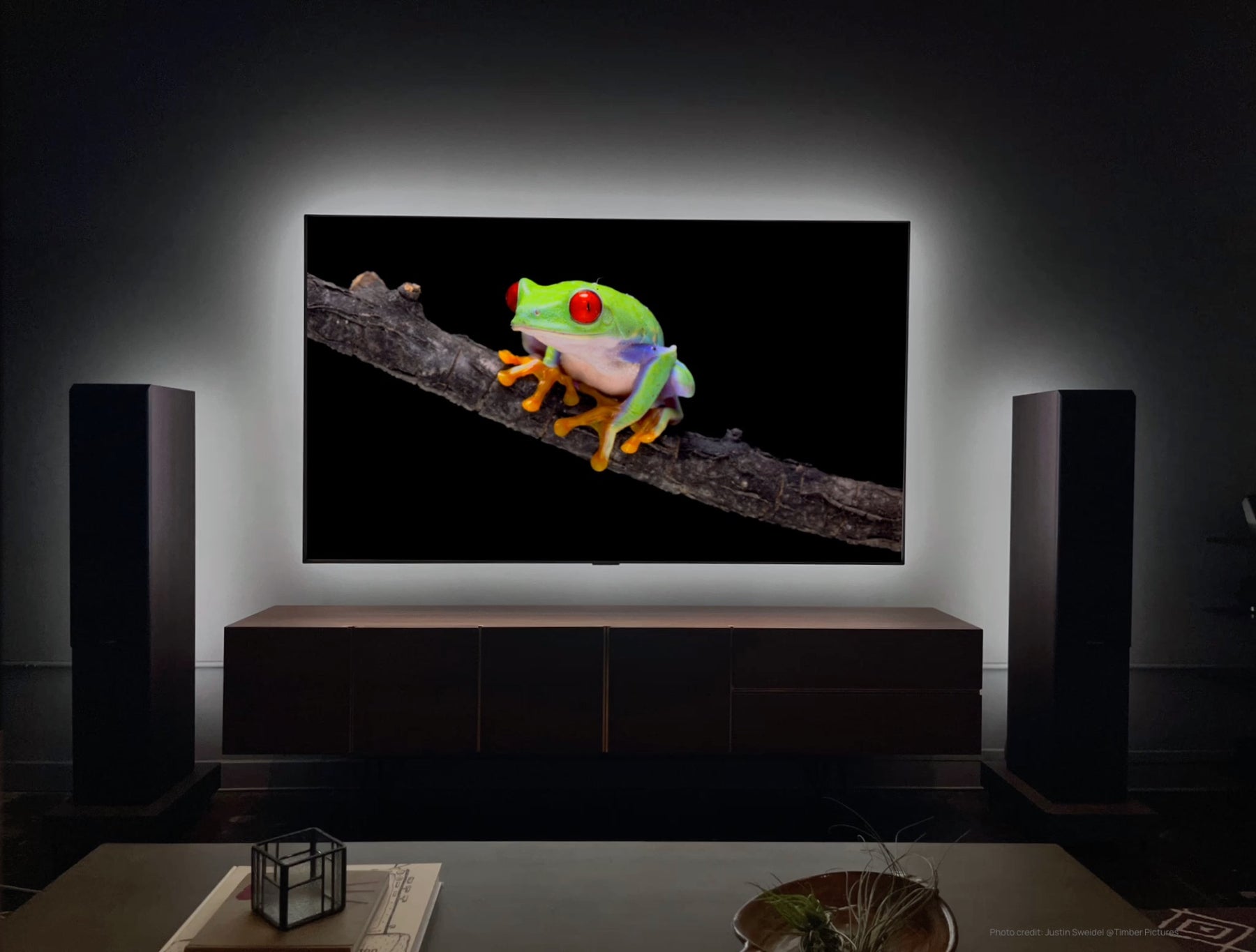Industry Standard Bias Lighting
Industry Standard Bias Lighting
MediaLight & LX1 Length Calculator
Please select the appropriate options below to determine the correct size bias lighting for your displays
What is the aspect ratio of the display?
What is the size of the display (This is the length of its diagonal measurement)
inches
Do you want to place the lights on 3 or 4 sides of the display (Read our recommendation on this page MediaLight & LX1 Length Calculator if you are having trouble deciding).
This is the actual length that is required:
You should round up to this size bias light (you can round down at your discretion if the actual and rounded measurements are very close. It is usually better to have more than too little):

Bias lighting is a source of illumination that emanates from behind your display, improving the perceived performance of your TV or monitor, by providing a consistent reference for your eyes. (I’m not talking about novelty colored LED lights that turn your living room in to a disco).
What does bias lighting do?
Proper bias lighting brings three key improvements to your viewing environment:


The MediaLight is a collection of industry-leading ColorGrade™ LED lights on an adhesive strip, that offers a simple and powerful bias lighting solution for any application. It is easily installed within minutes and, in most cases, powered via your television’s USB port, meaning the MediaLight will turn on and off alongside your television automatically. This makes the MediaLight a “set and forget” installation and, when you consider that all MediaLight bias light strips are backed by a five year warranty, means they are easily the best value upgrade you can make to your home entertainment environment.
But it’s not just for home theater applications - the MediaLight is used in professional color grading environments too. In fact, the MediaLight family now includes simulated D65 desk lamps and bulbs that all feature the same 98 CRI and 99 TLCI ColorGrade™ Mk2 LED chip as the MediaLight strips, and are backed by a three-year warranty.
You might think that OLED doesn't benefit from bias lights, but you'd be incorrect. Because of the better black levels and extremely high contrast ratios of OLED and Micro LED displays, eye strain is a bigger concern.
You say you don't experience eye strain? The perceived brightness or darkness of a display can still be enhanced and the contrast is still boosted, regardless of the capabilities of the display.
In the following image, we present two white squares in the center of of a black plus sign. Which one looks brighter?
 They are both the same, and both are limited by the maximum luminance of your display.
They are both the same, and both are limited by the maximum luminance of your display.
However, if you said that the white square on the left looks brighter, you've just experienced how bias lights boost contrast. Many people mistakenly believe that bias lights only improve shadow details. Now you can prove them wrong. Bias lights enhance perceived contrast through the entire dynamic range -– not just shadows!